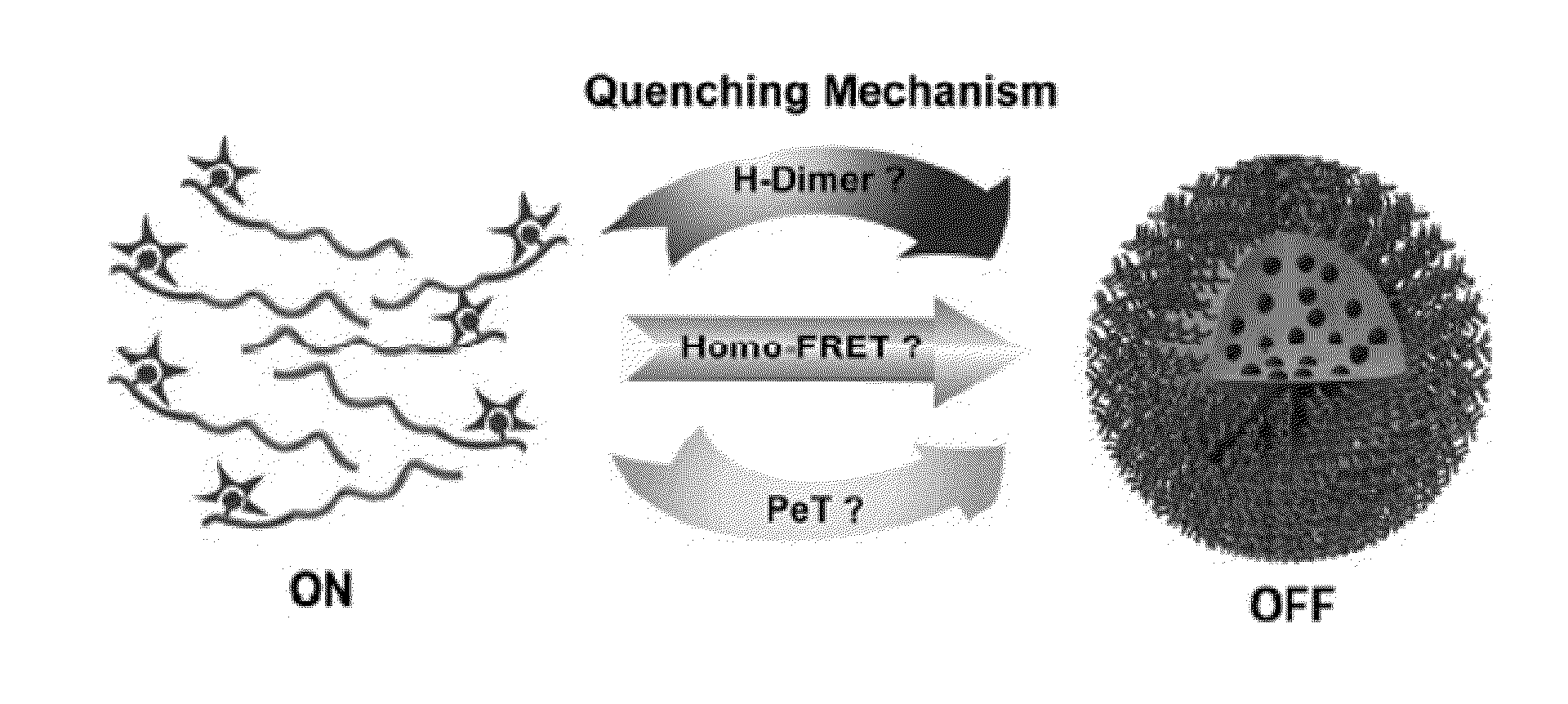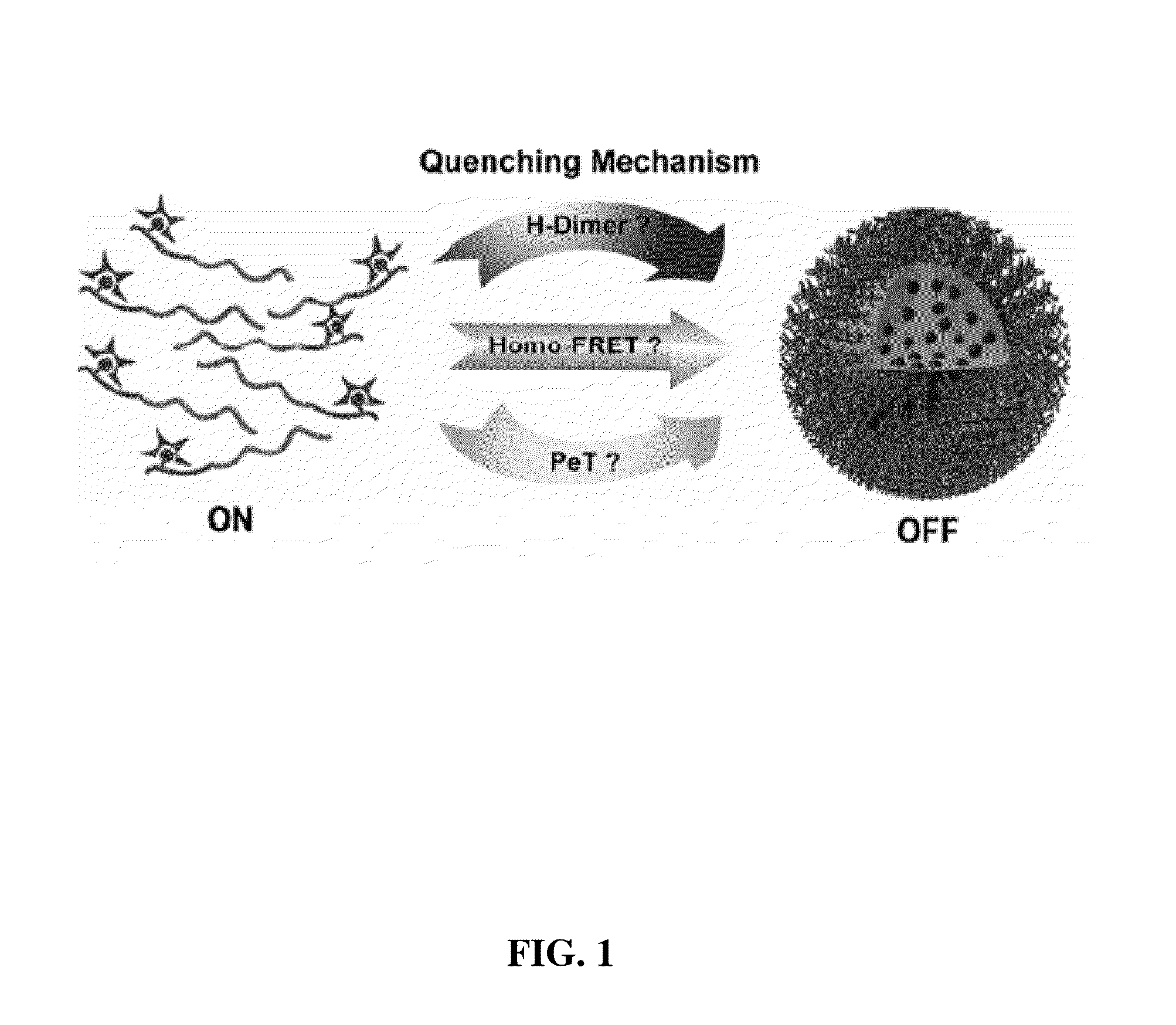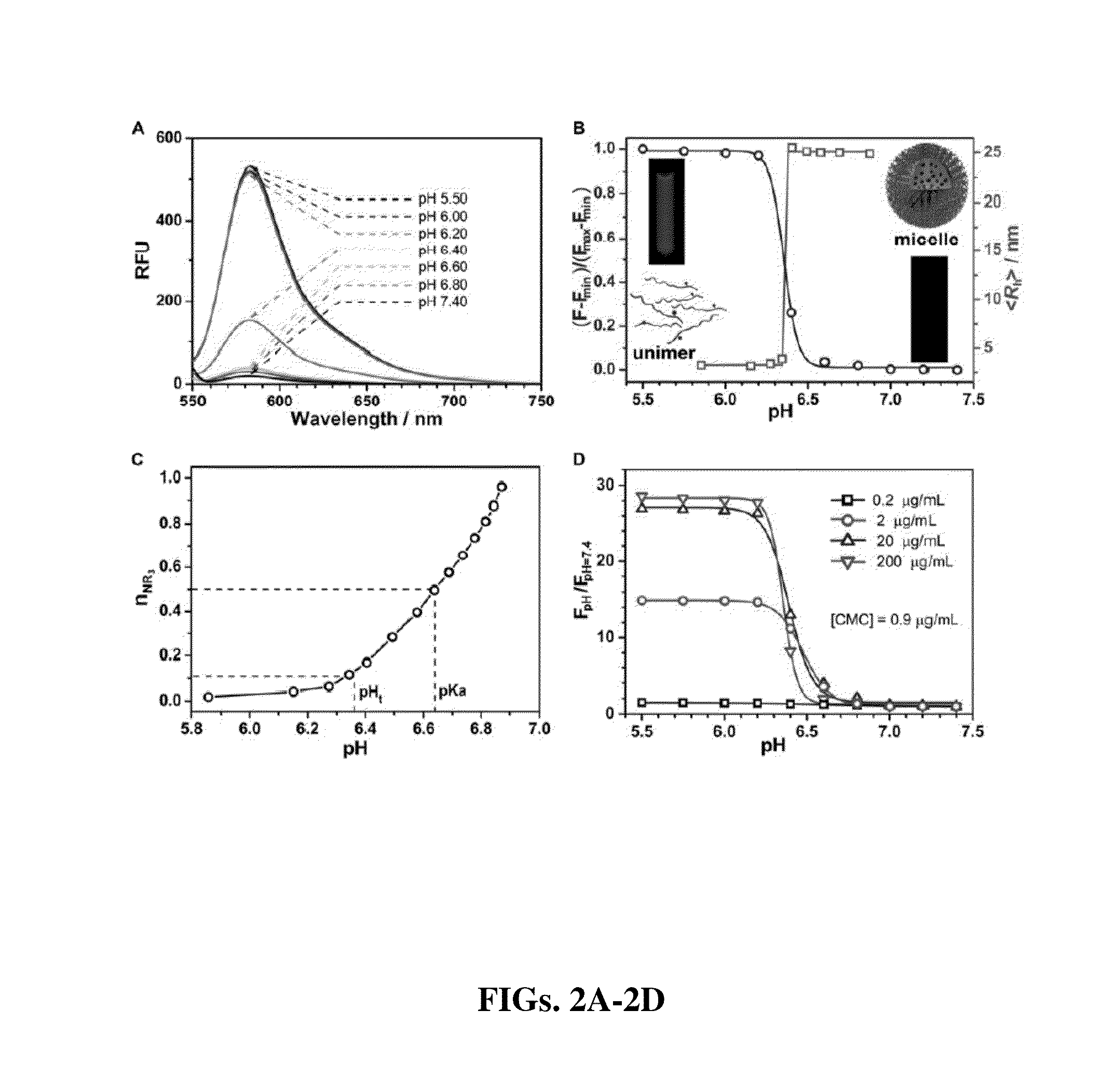MULTICOLORED pH-ACTIVATABLE FLUORESCENCE NANOPLATFORM
a nanoplatform and fluorescence technology, applied in the field of nanoplatforms for the detection of ph changes, can solve the problems of narrow ph response of nanoprobe designs, difficult simultaneous control of ph transition point and emission wavelengths (in particular, in the near ir range), and difficult for small molecular dyes to achieve broad ph respons
- Summary
- Abstract
- Description
- Claims
- Application Information
AI Technical Summary
Benefits of technology
Problems solved by technology
Method used
Image
Examples
Embodiment Construction
[0167]Various embodiments of the present invention provides pH-tunable, highly activatable multicolored fluorescent nanoparticles using fluorescent dyes. In certain embodiments, this multicolored nanoplatform utilzes ultra-pH responsive tetramethyl rhodamine (TMR)-based nanoparticles with tunable pH transitions in the physiological range (5.0-7.4). Methods of making tetramethyl rhodamine (TMR)-based nanoparticles described in Zhou, K., Chem. Int. Ed. 2011, 50, 6109; PCT / US2011 / 00148, and PCT / US2011 / 047497. pH-induced micellization of pH responsive nanoparticles is used in conjunction with fluorescence quenching to provide pH responsive fluorescent nanoparticles (see FIG. 1). For example, in one embodiment, a series of multicolored pH-activatable fluorescent nanoparticles is provided with independent control of emission wavelengths (500-820 nm) and pH transition points (5.0-7.4). The nanoparticles with different emission wavelengths achieved sharp pH response (ΔpH<0.25 between ON / OFF...
PUM
 Login to View More
Login to View More Abstract
Description
Claims
Application Information
 Login to View More
Login to View More - R&D
- Intellectual Property
- Life Sciences
- Materials
- Tech Scout
- Unparalleled Data Quality
- Higher Quality Content
- 60% Fewer Hallucinations
Browse by: Latest US Patents, China's latest patents, Technical Efficacy Thesaurus, Application Domain, Technology Topic, Popular Technical Reports.
© 2025 PatSnap. All rights reserved.Legal|Privacy policy|Modern Slavery Act Transparency Statement|Sitemap|About US| Contact US: help@patsnap.com



